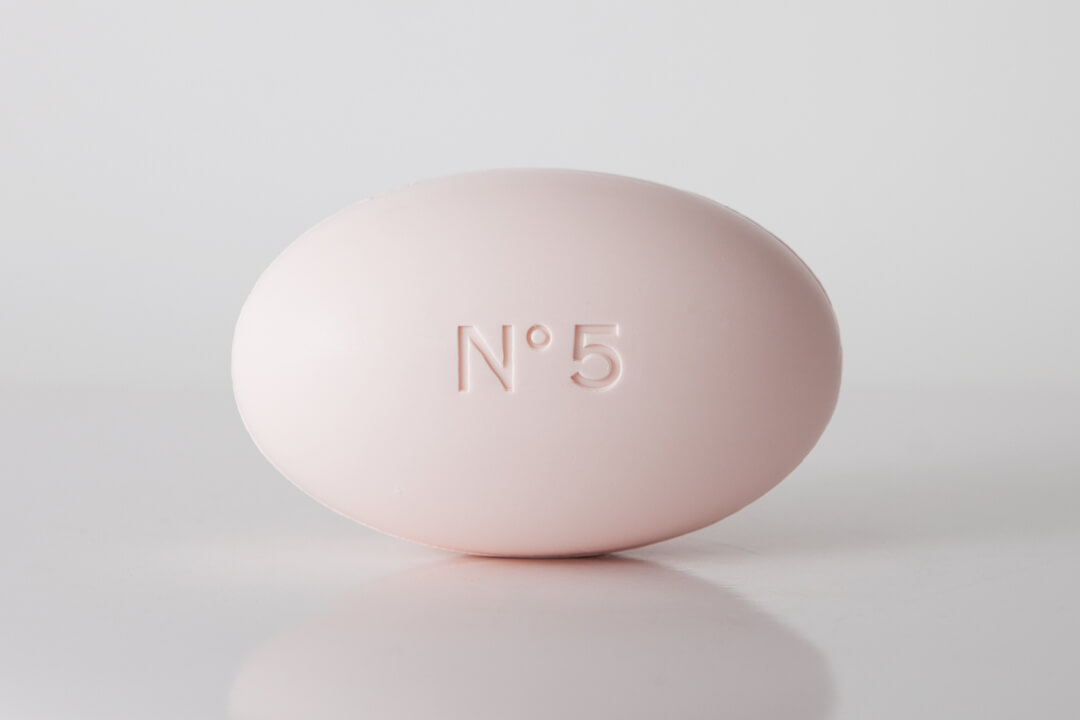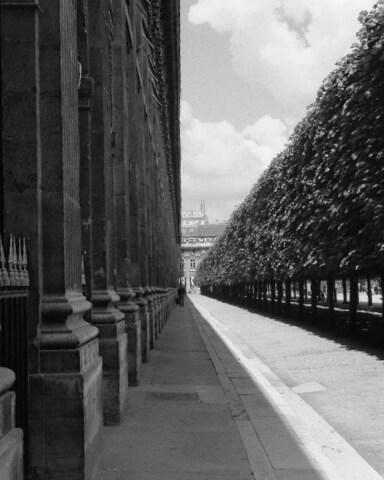How to stay young and desirable for 100 years?
With jasmine, the magic of Paris, courage, good branding and excellent lawyers. The history of perfume is not only glamor, it also contains a sad chapter of contemporary history.
From gift to worldwide bestseller
One hundred years ago, on May 5, 1921, Coco Chanel, on the occasion of the presentation of a new collection, gave her best haute couture clients a newly developed perfume called Chanel N° 5.
One hundred years later, Chanel N° 5 is still one of the world’s best-selling perfumes.
Every year, about 600 new perfumes are launched on the market. What are the secrets of success of Chanel N° 5 ?
If you can make it there …
Coco Chanel had long since sold the rights to the perfume Chanel N° 5, developed by perfumer Ernest Beaux, when it became a success in the crucial large US market.
Coco Chanel had sold the formula for Chanel N° 5 and the vast majority of the marketing rights to the Wertheimer family.
In 1940, the Jewish Wertheimer family had to flee from Paris via Bordeaux to Spain and on to South America to escape the Nazis. There the family obtained a visa for the United States of America.
So from then on, Chanel N° 5 was no longer produced near Paris, but in Hoboken, New Jersey. Back then, Hoboken was not yet trendy but bridge-and-tunnel, as those who did not live on the expensive Manhattan peninsula were called in politically incorrect times.
Sold with each bottle of Chanel N° 5 was and is the flair of Paris.

Jasmine was also contraband in the 2nd World War
The Wertheimer family knew the importance of the large U.S. market and did not want to interrupt the production of Chanel N° 5 even in wartime.
However, the essential oil of jasmine from the French town of Grasse was important for this. This important component of the perfume could not be replaced.
A family confidant was sent to Europe, which had just been devastated by World War II, to shop for jasmine in Grasse, France. He managed to acquire an appropriate amount of jasmine and export it to the United States of America.
Chanel N° 5 therefore contains not only the essential oil of jasmine flowers from Grasse but also a great deal of daring.
At first it seemed like a good deal
Coco Chanel had the idea to develop a perfume that, compared to the other perfumes of the time, did not focus on a light floral scent like rose or was a rather heavy sweet scent dominated by amber and musk.
She wanted a complex, elegant fragrance and she got it. However, it lacked the distribution channels and possibly also the desire to deal with the requirements of standardized production.
So it seemed an ideal deal – to sell the formula and marketing rights to Chanel N° 5. Twenty percent went to the then owner of the Galeries Lafayette department store, seventy percent to the Wertheimer family, who took over production of the perfume, and ten percent remained with Madame Chanel.
The only one who came away empty-handed, except for a new job as a perfumer, was Ernest Beaux, the “nose” behind Chanel N° 5.
With the onset of World War II, Coco Chanel put her fashion business on hold. The store on Rue Cambon no longer sold costumes, dresses and evening gowns. There was only one item left: The perfume Chanel N° 5.
Initially, German officers lined up to purchase a bottle, later American soldiers wanted to bring home a piece of Paris in the form of a bottle of Chanel N° 5.
Coco Chanel was angry
When Coco Chanel saw the great success Chanel N° 5 was having in the United States thanks to the Wertheimer family who had emigrated, she wanted to challenge the contract and based her lawsuit on the fact that the interim sale of the company in France was a sham to prevent the confiscation of Jewish property by the Nazis.
A settlement was finally reached, as Coco Chanel had begun to spread the rumor that Chanel N° 5 no longer met her quality expectations and threatened to market new perfume compositions N° 7, N° 8, N° 9, etc. under a slightly different brand name.
Obviously, the Wertheimer family did not want to wait until Coco Chanel would have completely diluted the unique nimbus of the name Chanel N° 5 with Chanel 4711 and would have caused an equally great reputational damage to their own name as well as to the Chanel brand.
Madame Chanel became very wealthy through this settlement. However, the Wertheimer family still owns Chanel to this day.
The company is not listed on the stock exchange and voluntarily published business performance figures for the first time three years ago.
In fiscal 2020, the first year after the passing of longtime Chanel designer Karl Lagerfeld, Chanel reported sales of U.S. $12.3 billion and earnings of U.S. $3.5 billion.
Details of the respective income streams are not published. Insiders estimate, however, that perfume and cosmetics contribute a not inconsiderable share to value creation.
The perfume with its own biography
Chanel N° 5 is an icon and has its own biography: “The Secret of Chanel N° 5. The Biography of a Scent”. The book by Tilar J. Mazzeo (2010) describes a piece of contemporary history and is exciting to read, even if you do not deal with perfume in detail, either professionally or privately.
There are nearly 60 biographies about Coco Chanel herself, including her own published memoirs, which tend to emphasize the more radiant themes of her life.
Her success in successfully making her mark in the fashion world is undisputed. The House of Chanel’s decision to make the first name Gabrielle more prominent is a smart brand strategy. It rejuvenates the brand while putting more focus on young Gabrielle Chanel’s achievements as a fashion designer.
From the monastery to Klosters
As a young half-orphan, Gabrielle Chanel grew up in poor circumstances and was given to the orphanage of the Cistercian monastery in Aubazine, France, for her education. She spent the last years of her life as a very wealthy woman in Switzerland.
Some of Gabrielle Chanel’s biographers assume that her upbringing in the Cistercian monastery laid essential foundations for the later perfume Chanel N° 5.
In the strict geometric architecture of the monastery, the number five, the pentagon, plays an important role and, as in most monasteries, this monastery included an extensive herbarium.
So we owe monasteries not only the delicious liqueur Chartreuse but also Chanel N° 5.
Gabrielle Chanel learned to sew in the convent. The scents of the herbarium and the fragrance of the incense traditionally used in a monastery, as well as the orphans’ Sunday walks through the Corrèze countryside, are likely to have been very formative impressions that sharpened their creativity and later business acumen in equal measure.

The icon Chanel N° 5
The perfumer Ernest Beaux had presented Gabrielle Chanel with a number of possible fragrances. Her decision fell on a fragrance composition that had already been developed in a similar formulation for the Russian tsar’s court and which is still loved around the world today.
Madame Chanel considered the number 5 to be her lucky number. New collections she presented each May 5. On May 5, 1921, she perfumed the rooms of her atelier and, following the presentation of a new collection, gave her clients a bottle of Chanel N° 5 perfume.
The flair of Paris and the exclusivity of haute couture were and are still inseparable from the perfume Chanel N° 5.
When Marilyn Monroe was asked in an interview what nightwear she preferred, she replied: Nothing, except Chanel N° 5.
Marilyn Monroe was not paid by Chanel for this statement. She wanted to add prestige to her own person by referring to Chanel N°5 and probably suspected that this statement would never be forgotten.
Please add to vocabulary
Sillage is the name given to the scent that a perfume leaves in the room in the immediate vicinity of a person wearing that perfume. Previously used only in professional circles, the term is increasingly moving into common usage.
The scent that Chanel N° 5 leaves behind is to a certain extent dependent on the particular person wearing it. However, the biggest difference is the dosage form of Chanel N° 5.
If you want to pamper yourself or someone else with the gift of a bottle of Chanel N° 5, test the fragrance beforehand in the different delivery forms.
The fragrance of Extrait Chanel N° 5, Eau des Parfum Chanel N° 5 and Eau de Toilette Chanel N° 5 are very different.
Chanel itself speaks of the Three Sillages of N° 5 as three interpretations of a piece of music: “The Extrait with its rich and precious sillage is a philharmonic interpretation. The generous, refined sillage of the eau de parfum represents the classic version. The eau de toilette, lighter and more subtle, embodies the acoustic interpretation.”
Which interpretation you prefer is a matter of taste and budget. The ingredients of an excellent perfume are precious. Read more in our article on fragrance.
Over a million euros for a barrel of Chanel No 5
This was the headline of the Neue Zürcher Zeitung in 2005, when it was about the comparison of the price of a barrel of crude oil, which was traded in London at that time for US Dollar 56.15. If the contents of the barrel had consisted of Starbucks brand latte, the barrel would have cost 1.875 euros. If it had been filled with Chanel N° 5, it would have cost Euro 1,865,248.
Consider the price of a good perfume as an investment in flair and charisma. GloriousMe would never start a video conference without first reaching for the bottle.
Photographs © GloriousMe




